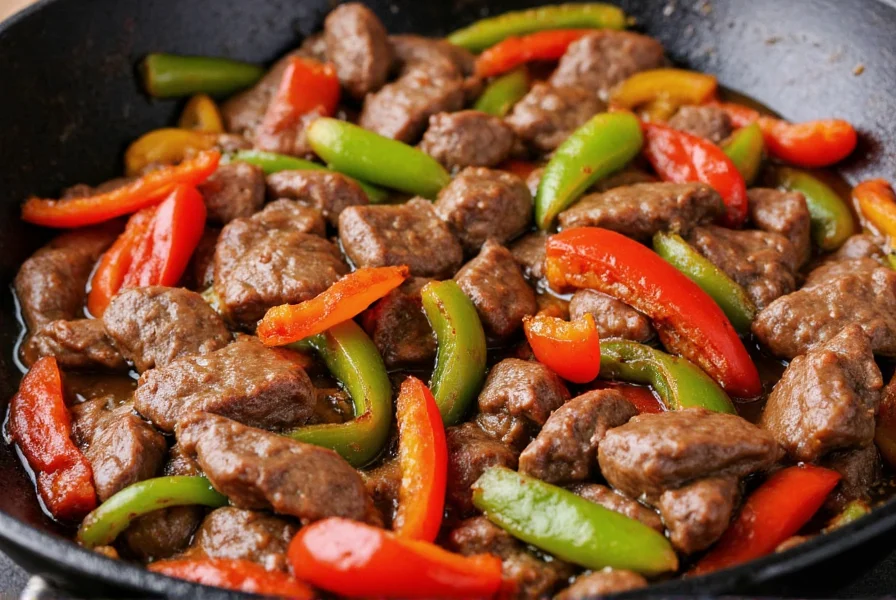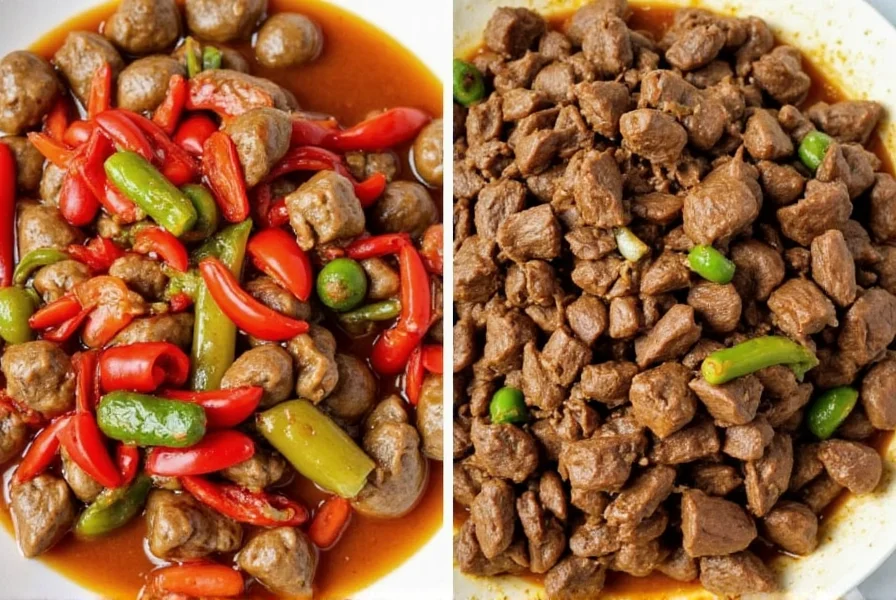When you search what is pepper steak, you're likely looking for a clear explanation of this beloved dish that appears on countless Chinese restaurant menus across North America. Unlike authentic Chinese cuisine, pepper steak represents a delicious adaptation created specifically for Western palates while maintaining essential stir-fry techniques.
The Essential Components of Pepper Steak
Understanding what defines pepper steak requires examining its core elements:
| Component | Description | Common Variations |
|---|---|---|
| Protein | Sliced flank steak or sirloin, typically cut against the grain | Chicken, pork, or tofu for alternative versions |
| Vegetables | Bell peppers (red, green, yellow) and onions | Some versions include mushrooms or carrots |
| Sauce | Soy sauce base with garlic, ginger, and sometimes oyster sauce | Variations may include hoisin or black bean sauce |
| Cooking Method | High-heat stir-fry technique | Some home versions use skillet preparation |
Origin and Cultural Context of Pepper Steak
When exploring what is pepper steak in Chinese cuisine, it's important to understand that this dish represents American Chinese food rather than traditional Chinese cooking. Created by Chinese immigrants in the United States, pepper steak emerged as part of the culinary adaptation process where chefs modified recipes to suit local ingredients and tastes.
The dish gained popularity in the mid-20th century as Chinese restaurants expanded beyond Chinatowns. Unlike Szechuan or Cantonese dishes featuring black pepper prominently, American pepper steak specifically highlights bell peppers as a key ingredient - hence the name. This distinction is crucial when understanding the difference between pepper steak and other Chinese beef dishes.

How Pepper Steak Is Prepared
The preparation of pepper steak follows standard stir-fry methodology with specific adaptations:
- Meat preparation: Thinly sliced beef is often marinated in soy sauce, rice wine, and cornstarch to tenderize and create a velvety texture
- High-heat cooking: A wok or heavy skillet is heated to very high temperature before adding oil
- Sequential cooking: Beef is stir-fried first, removed, then vegetables cooked before combining everything with the sauce
- Sauce integration: The signature brown sauce is poured in and allowed to thicken slightly, coating all ingredients
This cooking sequence preserves the crisp-tender texture of the bell peppers while ensuring the beef remains tender - a critical element in what makes authentic pepper steak different from other stir-fries.
Pepper Steak vs. Similar Dishes
Many people confuse pepper steak with other Chinese beef dishes. Understanding these distinctions helps clarify what exactly constitutes pepper steak:
- Pepper steak vs Mongolian beef: Mongolian beef features a sweeter, more viscous sauce with scallions, while pepper steak emphasizes bell peppers with a savory profile
- Pepper steak vs beef with broccoli: The vegetable component defines these dishes - bell peppers versus broccoli florets
- Pepper steak vs Szechuan beef: Szechuan versions include chili peppers and Szechuan peppercorns for heat, while pepper steak focuses on bell peppers without significant spice

Where to Find and How to Enjoy Pepper Steak
When searching what is pepper steak and where to try it, know that this dish appears primarily on American Chinese restaurant menus rather than in China. It's commonly served over steamed white rice, with the savory sauce providing perfect rice-complementing flavor.
For home cooking enthusiasts wondering how to make traditional pepper steak, the key elements include using proper cut of meat, maintaining high cooking temperature, and balancing the sauce ingredients without overwhelming the natural flavors of the beef and peppers.
Frequently Asked Questions About Pepper Steak
What cut of beef is best for pepper steak?
Flank steak is the traditional choice for pepper steak as it slices well and maintains texture during quick cooking. Sirloin or ribeye also work well, but should be sliced very thinly against the grain for maximum tenderness in your pepper steak preparation.
Is pepper steak actually Chinese?
Pepper steak is an American Chinese dish created for Western tastes. While it uses Chinese cooking techniques, traditional Chinese cuisine doesn't feature this specific combination of sliced beef and bell peppers. It represents the culinary adaptation that occurred as Chinese immigrants modified recipes using available ingredients in America.
What's the difference between pepper steak and steak and peppers?
Pepper steak specifically refers to the American Chinese dish with a brown sauce, while steak and peppers typically describes a Western preparation without the soy-based sauce. Pepper steak always includes the signature stir-fry sauce, whereas steak and peppers might be prepared with just olive oil, garlic, and herbs in non-Asian culinary traditions.
Can pepper steak be made gluten-free?
Yes, pepper steak can be made gluten-free by substituting tamari or certified gluten-free soy sauce for regular soy sauce. Most other ingredients in traditional pepper steak recipes are naturally gluten-free, making it relatively easy to adapt this dish for gluten-sensitive diners while maintaining the essential flavor profile.











 浙公网安备
33010002000092号
浙公网安备
33010002000092号 浙B2-20120091-4
浙B2-20120091-4